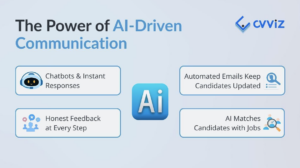Whenever we have a new job requirement to fill, we start sourcing active candidates. We hit leading job boards to source candidates. We often ignore strategies like sourcing passive candidates.
Quickly, active candidates are the ones that are proactively looking for jobs and passive candidates are the one that are content with their existing jobs but open to new opportunities.
If we look at the number, according to hiring stats by LinkedIn, 70% of the workforce fall under category of passive talent. And most of them are open to new job opportunities. 25% of the workforce is proactively looking for the job.
Let’s compare the two kinds of candidates. Passive candidates vs active candidates –
Active Candidates
Active candidates are the ones that are out there looking for job in the market. They are looking to switch their existing jobs because they are not happy for various reasons or they are unemployed.
Here are some key things about sourcing active candidates
- They are proactively looking for new job
- Their resumes are easily available on leading job boards
- They are also applying for multiple jobs
- They are approached by various companies at the same time
Passive Candidates
Passive candidates are content with their existing job and they are not actively looking for new job. But, they are open to new job opportunities.
Here are some key things about sourcing passive candidates
- They are not actively looking for jobs
- You may not find their latest resume on leading job boards
- They pursue job opportunity only if they are genuinely interested

Reasons Why Sourcing Passive Candidates Is Advantageous
After looking at numbers mentioned above and key differentiating factors for passive candidates vs active candidates, below are some compelling reasons to consider passive candidate hiring as a serious hire strategy.
1. No Competition
When you are trying to source or recruit active candidates, you are actually competing against thousand other recruiters from various firms. They are also after same candidates. Where as, if you source passive candidate, you probably will have no or little competition.
2. No Uncertainty Over Candidate Joining
The biggest challenge various companies facing today is the uncertainty over candidate actually joining the firm after accepting job offer. Good active candidates could be holding more than one job offer and they could join other firm over yours. Remuneration, commute, brand, employee policies these are some of the known decision making factors for candidates.
For passive candidates, most of such criteria are satisfied by their existing employers. So, if they are deciding to consider a new job opportunity then they must be serious about it. Hence, it is almost certain that they would join the firm if they accept the job offer.
3. Easy Candidate Screening
Most of the applications you receive for job requirement are irrelevant. It is one of the pain areas in the hiring process. Recruiters loose precious time in going through many irrelevant applications. Many active candidates might tweak their resumes to fit the job description. They could stuff their resumes with keyword so that they get the attention.
Passive candidates would avoid doing that. They would be more honest in their resumes.
Final Thoughts
Sourcing passive candidates is a great way to enhance your talent pipeline. Passive candidates are difficult to source, but easy to convert. You just need to nurture passive candidates in right way. If you focus solely on active candidates, you may find a good candidate but then you wouldn’t be the only recruiter reaching out to that candidate! There will be many other recruiters reaching out to same candidate. Use good mix of hiring strategies like passive candidate sourcing, job board candidate sourcing to close position faster.



